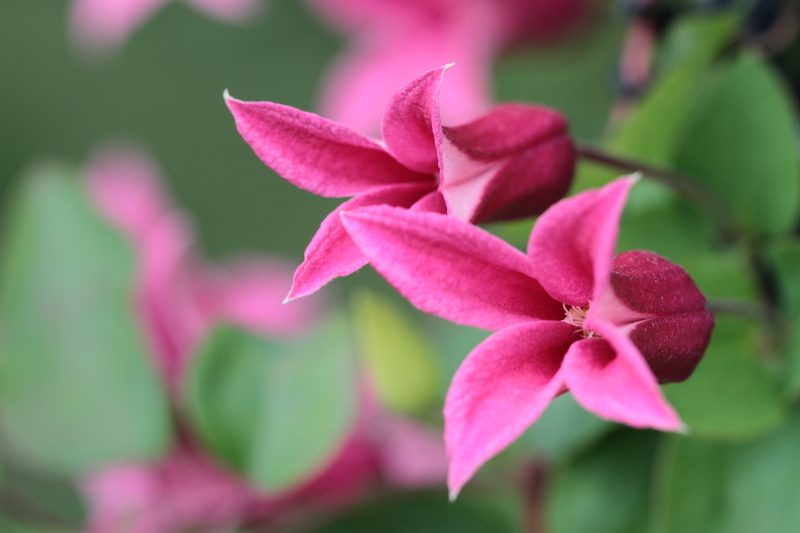Signs Your Lawn is Affected by Grubs
Posted on 03/12/2024
Maintaining a lush, green lawn can be a point of pride for many homeowners. However, if your lawn is suddenly looking patchy, discolored, or unhealthy despite your best efforts, you could be dealing with a grub infestation. Grubs are the larval stage of various beetles and can wreak havoc on your lawn by feeding on the roots of grass. Here's how you can identify the signs of grub damage to take prompt corrective actions.
What Are Grubs?
Grubs are the larvae of several types of beetles, including Japanese beetles, June beetles, and European chafers. These small, C-shaped pests can vary in size but are typically white and about half an inch to an inch long. Grubs usually reside just below the surface of the soil and feed on the tender roots of grass, causing significant damage over time.

Initial Signs of Grub Infestation
The initial signs of grub infestation can be subtle and easily overlooked. However, early detection is crucial for effective management. Here are some early indicators:
1. Thinning Grass
One of the first signs that your lawn may be infested with grubs is thinning grass. The affected areas will look sparse and may appear to be suffering from drought stress, even if the lawn has been adequately watered.
2. Beetles in the Garden
An increased presence of beetles around your garden or yard can be a precursor to grub issues. These beetles lay eggs in the soil, which eventually hatch into grubs.
3. Slow Growth
If parts of your lawn are growing more slowly than others, it could be due to grub activity. Grubs feed on grass roots, depriving the plants of nutrients and water, which can hinder growth.
Advanced Signs of Grub Damage
As the grub population increases and the damage becomes more extensive, the signs become more noticeable:
1. Brown Patches
Large brown patches on your lawn are a classic sign of grub damage. These patches will often appear suddenly and can grow larger over time as the grubs continue to feed.
2. Spongy Turf
When grubs feed on grassroots, they weaken the plant's hold on the soil. As a result, parts of your lawn may feel spongy or bouncy underfoot. In severe cases, you can lift the grass like a carpet to reveal the grubs underneath.
3. Increased Animal Activity
If you notice an increase in animals like birds, raccoons, or skunks digging up your lawn, it could be because they are searching for grubs to eat. These animals often cause considerable damage while foraging.
Secondary Effects of Grub Damage
Grub damage can set off a chain reaction of issues in your lawn, further exacerbating the problem:
1. Weed Intrusion
Weakened grass is less capable of competing with invasive weeds. Once grubs have compromised the grass roots, you'll often see an increase in weed growth in those areas.
2. Disease Susceptibility
A weakened lawn is more susceptible to diseases like fungi and lawn blight. The damaged root system makes it easier for these maladies to take hold and spread.
3. Water Runoff Issues
A healthy lawn helps with water absorption and prevents runoff. Severely damaged grass won't absorb water effectively, leading to potential erosion and water pooling issues.
How to Confirm Grub Infestation
If you suspect that grubs are affecting your lawn, you'll need to confirm their presence. Here are a few methods to do so:
1. Dig Test
Cut a section of the affected area about 6 inches by 6 inches and about 2 to 4 inches deep. Look for grubs in the soil beneath. Finding more than five grubs per section typically indicates a problem.
2. Wait for Rain
After a good rainfall, inspect the lawn. Grubs often come closer to the surface, making them easier to spot.
3. Professional Inspection
Consider hiring a professional lawn care service to conduct an inspection. They can not only confirm the presence of grubs but also recommend effective treatment solutions.
Treating Your Lawn for Grubs
Once you've confirmed a grub infestation, treating it promptly is essential to save your lawn. Here are some treatment options:
1. Chemical Treatments
Various insecticides can effectively control grub populations. It's recommended to apply these treatments during the late summer or early fall when grubs are most active.
2. Biological Treatments
Beneficial nematodes and milky spore disease are natural grub predators and can be useful for long-term control. These methods are environmentally friendly and specifically target grubs without harming other beneficial insects.
3. Cultural Practices
Maintaining a healthy lawn through proper watering, fertilization, and mowing can make it more resistant to grub damage. Additionally, aerating the lawn can disrupt grub habitats and expose them to predators.

Preventing Future Infestations
The best way to manage grubs is to prevent their occurrence in the first place. Here are some preventive measures:
1. Lawn Maintenance
Keep your lawn healthy by following best practices for watering, mowing, and fertilization. A robust lawn is more resistant to pests.
2. Monitor Beetle Activity
Keeping an eye on beetle activity in your garden can give you a heads-up about potential grub problems. Treating beetles before they lay eggs can significantly reduce the likelihood of a grub infestation.
3. Organic Solutions
Use organic or natural pest control solutions to manage both beetles and grubs. Beneficial nematodes can be a long-term solution if applied correctly and consistently.
Conclusion
Grub infestations can be a major nuisance for any homeowner, causing a wide range of issues from thinning grass to extensive damage that can turn into costly repairs. By understanding the signs, confirming the presence of grubs, and taking appropriate treatment and preventive measures, you can maintain a healthy, vibrant lawn. Early detection and intervention are key to managing and mitigating grub damage effectively. Stay vigilant and proactive to ensure your lawn remains a beautiful, lush green space.












